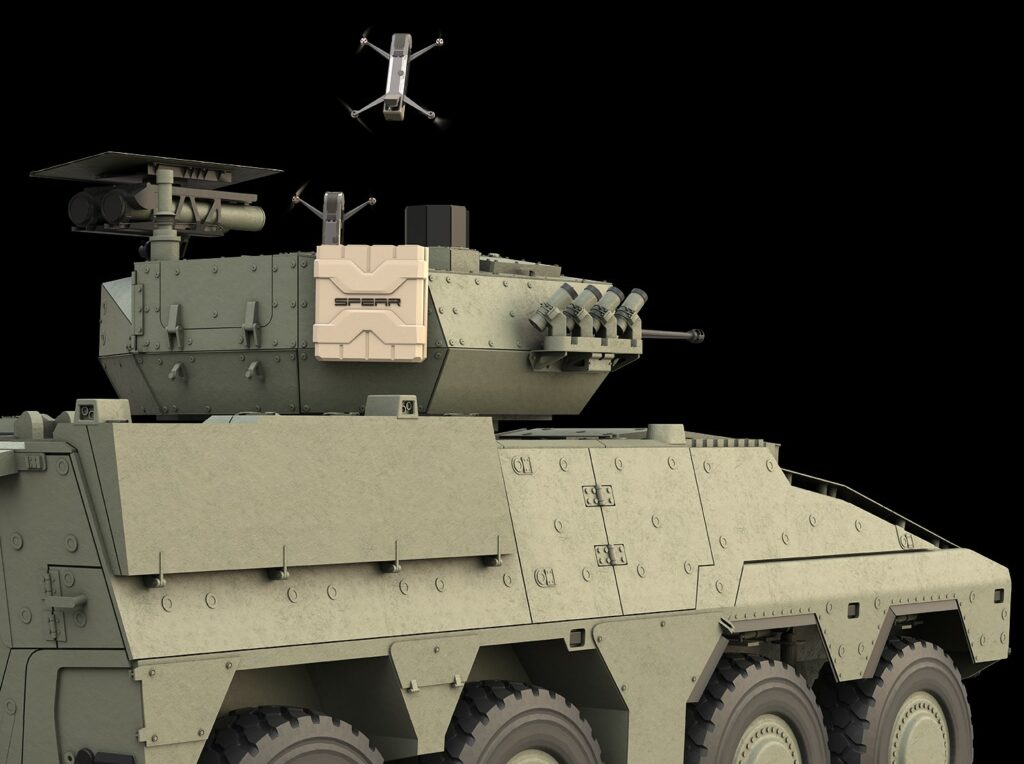Israeli encapsulated unmanned aerial vehicle (UAV) specialist SpearUAV is moving the potential of its Viper 300 range of quadcopter loitering munitions (LMs) beyond individual soldier use to include a vehicle-mounted capability.
At the DSEI 2023 defence exhibition, held in London from 12-15 September, SpearUAV presented its Multi-Canister Launcher (MCL) concept, which allows multiple Viper 300 LMs to be mounted on a vehicle.
Yiftach Kleinman, Spear’s executive vice president commercial, told ESD that it would be up to the customer to decide how many LMs would be accommodated, but the MCL example presented at DSEI held four Viper 300s. These have a 300 g payload that typically includes a small warhead that would be effective against personnel and softskin vehicles, but the warhead can also be replaced by an electronic warfare/jamming payload or additional batteries to give extended endurance for ISR missions, with the customer able to determine the mix of capabilities to be carried.

A Viper 300 LM has an endurance of 20 to 30 minutes, depending on its payload. Kleinman said of the greater endurance offered by fixed-wing LMs, “They fly longer, but do I really need that as a land commander?” He asserted that the advantages of a rotary-wing system – most notably its ability to abort an attack at the last second, unlike a fixed-wing LM in its terminal phase – outweighed considerations of endurance that are less relevant to a dynamic tactical situation.
Kleinman added that the Viper 300 system is artificial intelligence enabled, enhancing its ability to positively discern potential targets, and also has a swarm capability to complement the use of individual LMs. The system also has a proprietary soft-launch system that makes it completely safe to use around nearby dismounted soldiers.
Asserting that the Viper 300 system is “immediate, robust, low SWaP [size, weight and power footprint], intuitive and accessible”, Kleinman said of the competition in the market, “There’s so many drone companies. Now armies have the experience of using drones, which is good, because they understand what they don’t have.”
Peter Felstead






